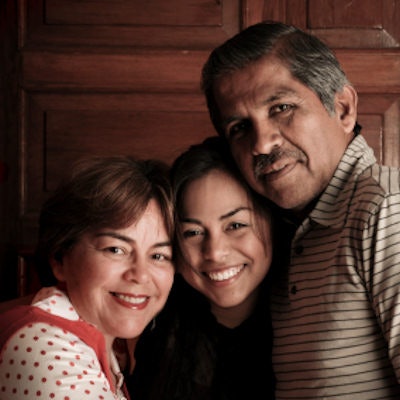
Why is the caries rate higher for Latino children compared with other kids the U.S., and what strategies can help lower caries prevalence? To develop a better understanding of these complex issues, researchers conducted focus groups with Latino parents to explore factors that influence the oral health of their children and develop strategies for improving it.
The researchers identified gaps in parental knowledge about caries etiology and prevention, and they provided guidelines on how practitioners, educators, and insurers can improve communication with this growing community. Their research was published in BMC Oral Health (March 2, 2017).
"Development of more oral health services with providers who are sensitive to the needs of the population are long-term goals," the authors wrote.
The study was led by Kimberly K. Walker, PhD, from the University of South Florida, and conducted with her research colleagues from various institutions, including Indiana University–Purdue University, Indiana University School of Dentistry and School of Medicine, and La Plaza, a Latino community organization serving Central Indiana.
Multipronged approach needed
Statistics released by the Centers for Disease Control and Prevention in March 2017 show that a higher proportion of Hispanic children in the U.S. ages 2 to 8 have untreated dental caries in their primary teeth compared with non-Hispanic white children (19.4% versus 9.5%). Likewise, previous research has shown that children who have immigrated from Mexico and those of Mexican descent born in the U.S. have higher caries rates and use dental services less frequently than other children in the country.
While dental caries is preventable, its prevalence is dependent on behaviors, attitudes, and access to services. Cultural beliefs can affect these attitudes and behaviors and also influence dental health through differences in diet, use of dental care, and the identification of caries and its sequela, the authors explained.
However, most studies on the oral health of Latino children in the U.S. have not worked with community partners and may have lacked access to pertinent economic, social, and behavioral information affecting oral health and the caries prevention, they noted. The Latino population in the Midwest is experiencing much growth, with its members composed primarily of immigrants living below the poverty level outside of majority Latino neighborhoods, but research on this group is limited.
The investigators used a community-based participatory research approach to gather data about the experience of Latino caregivers who used the services of La Plaza in Indianapolis.
Their primary research questions were the following:
- What are the experiences (including culture), cognitions, and effects (emotions) related to caries etiology, prevention, and management, and the perceived barriers to accessing oral healthcare for Latino caregivers' children?
- How do the experiences, cognitions, and effects (emotions) translate to possible behavioral outcomes?
- Based on results, what is an educational model for educating and improving the oral health behaviors and decision-making of Latino caregivers to improve the oral health of their children?
Two moderators led eight hour-long focus groups of 14 to 18 parents who self-identified as being of Latino origin and who had a child who received a dental exam in a parallel research study, totaling 130 participants (100 women and 30 men). The participants were all of low socioeconomic status and ranged in age from 18 to 54, with the majority from 24 to 34.
A number of themes emerged in the transcripts of the focus groups:
- Caries etiology was not well-understood. It was described by most as a linear relationship between frequent ingestion of high-carbohydrate foods and beverages, including soft drinks, and the development of carious lesions.
- Fatalism was a common belief, with few parents believing that caries could be prevented. Fatalism is correlated with lower oral health knowledge, and many parents lacked knowledge of accepted oral hygiene practices and preventive needs.
- The minority of parents who believed caries to be preventable and that a good diet and taking vitamins were important said that the responsibility for a child's diet and oral hygiene belonged to the mother only and not the father.
- Cost was the most commonly mentioned barrier to receiving professional dental care, with fathers saying that it was their responsibility to provide for that.
- Lack of availability of professional dental care when parents weren't working, transportation issues, and limited ability to communicate in English were identified as additional barriers to care.
The researchers identified four areas of need based on the study results:
- Education materials that are culturally and linguistically appropriate
- Insurance information conveyed in understandable terms
- Providers who are culturally sensitive to Latino needs
- Services and transportation to improve access to care
Because La Plaza focuses on health education, the research team prioritized the development of an educational program as the first step toward the long-term goal of reducing the dental caries rate in Latino youth in Central Indiana. The team proposed educational sessions with Latino parents of children up to age 13 that are led by Hispanic community leaders and culturally tailored to the needs of the community.
The group has also developed brochures and pamphlets aimed at women and men that provide oral health information and are designed to target misconceptions related to caries and combat fatalism. They include information on nutrition, the establishment of a dental home by age 1, and the role of fluoride, sealants, and early initiation of a regular oral hygiene regimen.
The researchers plan to develop training sessions for parents on understanding insurance documents, common oral terminology, accessing online dental information, and communication with dental providers.
"Because caries is multifactorial, greater attention must be made to educate parents as to how these factors interact to cause or prevent the disease over time and emphasize the disease is preventable and not inevitable," the study authors wrote.
Limits to extrapolation
The authors acknowledged some limitations to their study, including the following:
- Caution should be used when extrapolating the results to other Latino populations.
- There were more women than men in the focus groups, and their responses may reflect the distribution of gender and cultural norms of the participants.
- The focus groups did not include many recent immigrants, and their experiences may be different and include more pediatric oral health difficulties.
Nevertheless, the authors noted that their model and research could be helpful for other groups.
"Our education model/intervention for providing culturally sensitive assistance to Latino parents at La Plaza can be expanded to reach beyond our original target group to help reduce the barriers to oral healthcare that affect the growing population of Latino immigrant children in the Midwest," they concluded.



















